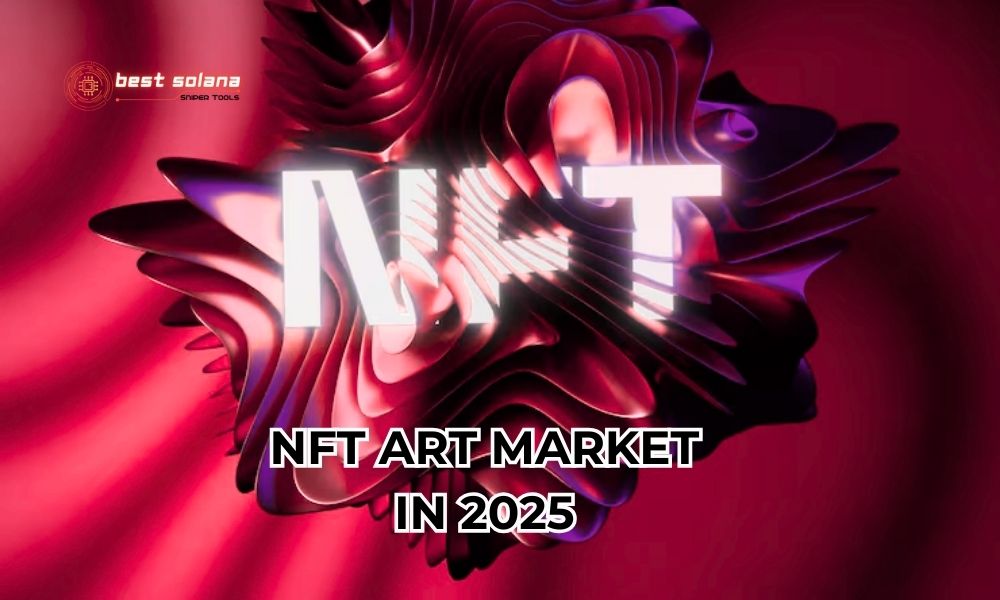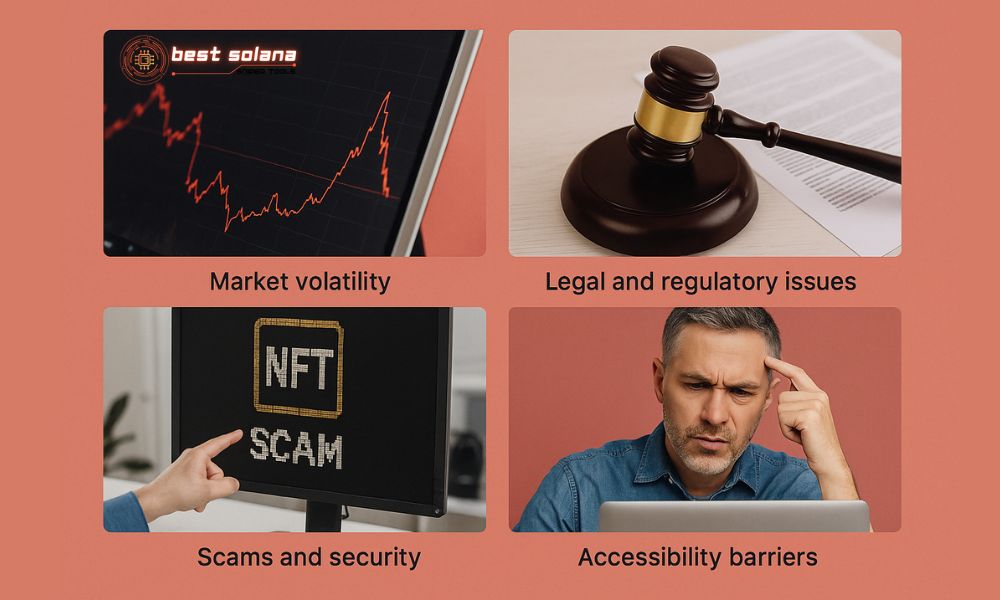The NFT Art market in 2025 promises exciting changes following its boom and subsequent major correction phase. Will blockchain technology and artists’ continuous creativity reshape how we collect and experience digital art? This article explores the key trends, potential, and challenges that lie ahead for the evolving landscape, focusing specifically on the NFT Art sector.

Looking back at the journey so far
To predict the future, it’s essential to review the past. The NFT art market witnessed meteoric growth, capturing the attention of artists, collectors, and investors alike. NFT artworks sold for millions of dollars, creating a wave of excitement but also considerable skepticism.
However, the “bubble” phase didn’t last forever. The market underwent a significant correction, with the value of many NFTs plummeting and transaction volumes decreasing. This led many to worry about the sustainability of NFT art. But this was also a necessary purification process, weeding out lower-quality projects and short-term speculators, paving the way for more mature development.
Trends shaping the NFT Art market in 2025
Moving towards 2025, the NFT Art market is expected to undergo significant shifts, focusing more on tangible value and sustainable applications.
Maturation of technology:
Scaling solutions (Layer 2): Layer 2 solutions on blockchain platforms like Ethereum will become more prevalent, helping reduce transaction fees (gas fees) and increase processing speeds. This makes creating, buying, and selling NFTs more accessible to a broader audience.
Improved user experience (UX): NFT platforms and wallets will become more user-friendly, simplifying the process for newcomers. Intuitive interfaces and understandable security procedures will be key factors.
Interoperability: Greater efforts will be made to enable NFTs to move and be utilized across different blockchain platforms and applications, especially within the developing metaverse space.
Shifting roles of artists and creators:
Focus on utility and community: Artists will likely move beyond selling NFTs purely as art pieces. They will integrate added value, such as access to exclusive content, special events, accompanying physical items, or community governance rights. Building loyal communities around NFT projects will become crucial.
Involvement of established names: More traditional artists and major brands are expected to explore and enter the NFT space, bringing credibility and diversity to the market.
New NFT art forms: Generative art, interactive NFTs, and NFTs integrating music and video will continue to evolve, pushing creative boundaries within the NFT Art market in 2025.
Collector and investor behavior:
Shift from speculation to long-term collection: Collectors will likely pay more attention to genuine artistic merit, the artist’s reputation, the story behind the work, and associated utilities rather than just chasing short-term profits.
Demand for appraisal and authentication: Tools and services that help verify the provenance, authenticity, and value of NFT Art will likely see significant development.
Institutional participation: Investment funds and traditional art galleries might start allocating a portion of their portfolios to NFT Art as a potential alternative asset class.
Integration with the Metaverse and virtual/augmented reality (VR/AR):
The year 2025 could witness deeper integration between NFT Art and the metaverse. Users might display their NFT collections in virtual galleries, interact with artworks in 3D spaces, or use AR to “place” NFTs into their real-world environment. This integration is a key aspect of the future NFT art market in 2025.
Potential challenges
Despite the potential, the NFT Art market in 2025 still faces several challenges:
- Market volatility: The inherent nature of digital assets remains volatile, and NFTs are no exception.
- Legal and regulatory issues: The legal framework for NFTs remains unclear in many jurisdictions, creating uncertainty for creators and buyers.
- Scams and security: Fraudulent activities and phishing attacks remain threats, requiring users to be vigilant and platforms to enhance security measures.
- Accessibility barriers: Although improving, understanding and participating in the NFT market can still be complex for a large segment of the public.

What opportunities lie ahead?
Despite the challenges, opportunities within the NFT art market in 2025 are substantial:
- Democratization of art: NFTs continue to empower independent artists, allowing them direct access to global collectors without traditional intermediaries.
- Niche market growth: Communities focused on specific types of NFT art (e.g., photography, 1/1 NFTs, pixel art) are expected to strengthen.
- Bridging physical and digital worlds: NFTs can act as bridges, certifying ownership of physical artworks or unlocking real-world experiences (often termed ‘phygital’).
The Nft art market in 2025 promises greater maturity and sustainable value, driven by advancing tech and evolving creator-collector dynamics. Despite challenges, its revolutionary potential persists. For sharp insights into crypto trends and automated trading strategies, stay informed by following Best Solana Sniper.
